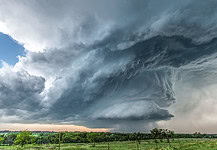Last Updated on August 6, 2023, 2:50 AM | Published: May 29, 2023
OKLAHOMA CITY — Every year, on the last Monday of May, Memorial Day is observed as a federal holiday and is typically a time of relaxation with friends and family.
But, here are five things you may not know about Memorial Day:
Original name was ‘Decoration Day’
At the end of the Civil War, family and friends of those who had sacrificed their lives in battle for the Union Army started decorating the graves in the massive military cemeteries made necessary by the horrific numbers of Americans killed in the fighting.
And so the name “Decoration Day” evolved among families and communities, at first on May 5 of each year.
First Decoration Day held by African Americans
The earliest of commemorations was organized by a group of formerly-enslaved people in Charleston, South Carolina (where the Civil War began) less than a month after the Confederacy was defeated and surrendered in 1865.
After Confederate forces left Charleston, the freed Blacks honored Union troops who had been captured and died in a makeshift prison camp by giving them proper burials. Confederates had buried the Union troops’ bodies in a mass grave after they died from exposure.
Original standard date was May 5
Communities in both the North and South quickly began to honor their war dead with some sort of commemoration after the war was over.
In 1966, the federal government recognized Waterloo, New York as the birthplace of Memorial Day. The town started holding remembrance ceremonies and decorating graves on May 5, 1866. Eventually, the date May 5 became the standard date for Decoration Day until many decades later.
Eventually, in 1868, General John A. Logan, leader of an organization for Northern Civil War veterans called for a nationwide remembrance later in the month.
He chose May 30 because it was not the anniversary of any battles of the Civil War.
The first official Decoration Day commemoration was held May 30, 1868, at Arlington National Cemetary. General James Garfield made a speech and 5,000 participants decorated the graves of 20,000 Civil War soldiers buried there.
While the northern states settled on May 30 as Decoration Day, in the South, individual states had a variety of traditions unique to almost every state.
Evolution to ‘Memorial Day’
By the time the U.S. entered WWI, it became apparent that there would be a demand by loved ones to honor the war dead from more than just the Civil War.
Many still called the day “Decoration Day” but “Memorial Day” became the more dominant term by the early 1960s because by then it encompassed honoring World War I, World War II, and the Korean War dead.
In 1968, Congress standardized the day when they passed the Uniform Monday Holiday Act, which shifted Memorial Day from the date of May 30 to the last Monday in May creating a three-day weekend along with several other federal three-day weekends.

At present, Memorial Day recalls and honors all service members who sacrificed their lives in all of the wars and actions throughout the history of the United States.
The weekend is still marked by somber ceremonies at military installations on Memorial Day. And, most Americans see it as a day off and the beginning of summer.
Traditions of placing flags and wearing poppies
Longstanding traditions among many still involve placing small American flags at the graves of those who served.
Also, some wear either real or imitation red poppies.
The tradition came from WWI when a Canadian brigade surgeon for an artillery unit wrote a touching poem called “In Flanders Field” after seeing a large spread of red poppies blooming on a battleground that had been devastated by fighting the winter before.
The poem was published in several magazines and some on both sides of the Atlantic started the tradition of wearing red poppies to remember those who sacrificed their lives during WWI.
Founder, publisher, and editor of Oklahoma City Free Press. Brett continues to contribute reports and photography to this site as he runs the business.










